The Science of Peaking: Designing a Successful Powerlifting Program
Written by The Boostcamp Editors
Unlocking the Secrets of Peaking for Powerlifting
So you’ve been powerlifting and training hard on the big three compound lifts which are the squat, bench and deadlift. Perhaps you are making great progress with the Boostcamp programs and now you might even have your eyes set on participating in an actual powerlifting competition in the near future. You're going to want to be the absolute best you can be, and maybe even take home some hardware. That being said, you’re probably wondering what you need to be doing to prepare yourself for this, regardless of your experience level.
This is where "peaking" comes into play. You may have heard of the term before, but peaking is what will help you maximize your performance on the platform, especially for experienced lifters. After all, the only lifts that really count are the ones performed in competition. No one really cares about the world record you set in your garage gym. If you want to be prepared for success in powerlifting, you will want to read more about the science of peaking.
Table of Contents
What is peaking and tapering?
Why is peaking and tapering necessary?
How long is a peaking phase?
How do you peak for a competition
Trial and error
Tips for your peaking phase
Other considerations while peaking
What is Peaking and Tapering in Powerlifting?

Peaking simply refers to the process that maximizes your preparedness and performance at a specified time, such as a powerlifting meet. When it comes to powerlifting, the process of peaking and tapering helps you to be at your strongest on the day of the competition, so your one rep max is top notch. This means that with peaking, you should feel more recovered heading into the competition with low fatigue and maximal fitness by the time you go up to lift. With specific focus on competition lifts, peaking and tapering programs are crucial for success in powerlifting.
A taper on the other hand is a reduction of overall training loads, also known as a step taper. This can aid in your recovery and is a key part of the overall peaking process. In powerlifting this would simply be a reduction in volume (sets and reps), intensity (load on the bar), or a mix of both - different things that are crucial to the peaking process. The key with both tapering and peaking is to maintain all the gains you’ve made so that you can realize them on the platform.
These concepts come from the traditional theory of periodization (1). Periodization was a way for coaches and athletes to structure their training over a longer period of time. Think about olympians who prepare for the Olympics once every four years. Their overall goal and timeframe will be looking towards that one singular event. The idea of periodization can help you plan for something like this. Although there is research to help guide how to facilitate this process, there is a lot of variance and uncertainty as to what the proper way to peak and taper for a competition is (2). Keep this in mind as you read on.
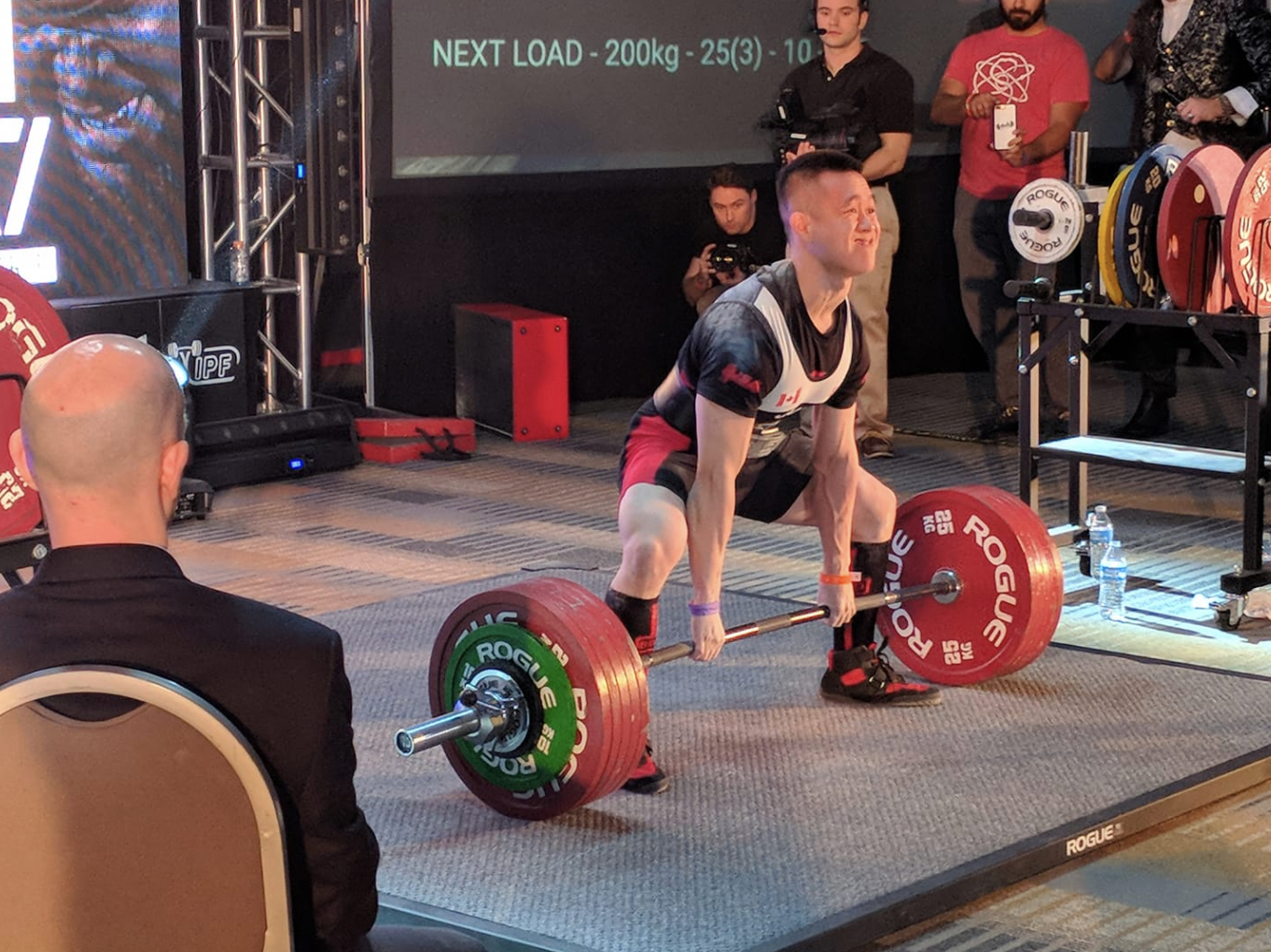
Why is Peaking and Tapering Necessary?
Throughout a training program, you accumulate fatigue over every training session while you try to enhance your strength and nervous system. Of course, peaking and tapering itself is definitely not mandatory and you can just compete after your typical training program if you choose to do so. However, spending some time to minimize this fatigue and improve endurance can help you better realize the strength gains you have made. For example, think about it in the context of running. If you’ve been running 10km a day and have a marathon coming up, wouldn’t it make sense to take a break? You can’t completely rest however because you still want to keep your fitness up, but you do want to recover from all that built up fatigue, as it also helps lower the risk of injury. Either way, you would have better odds of success going into a competition well recovered than not.
If you look closely at most Boostcamp programs catered to strength and powerlifting, you’ll notice they incorporate peaking and tapering leading into your final one rep max attempts.
Take a look below at week nine of TSA’s 9 week intermediate program. You can see just how much overall training volume is reduced that week while maintaining some intensity. This helps facilitate recovery while maintaining your strength to help maximize your performance when it truly matters on your test day or meet day. Read more about the complete program here: https://www.boostcamp.app/bryce-lewis/tsa-9-week-intermediate-approach
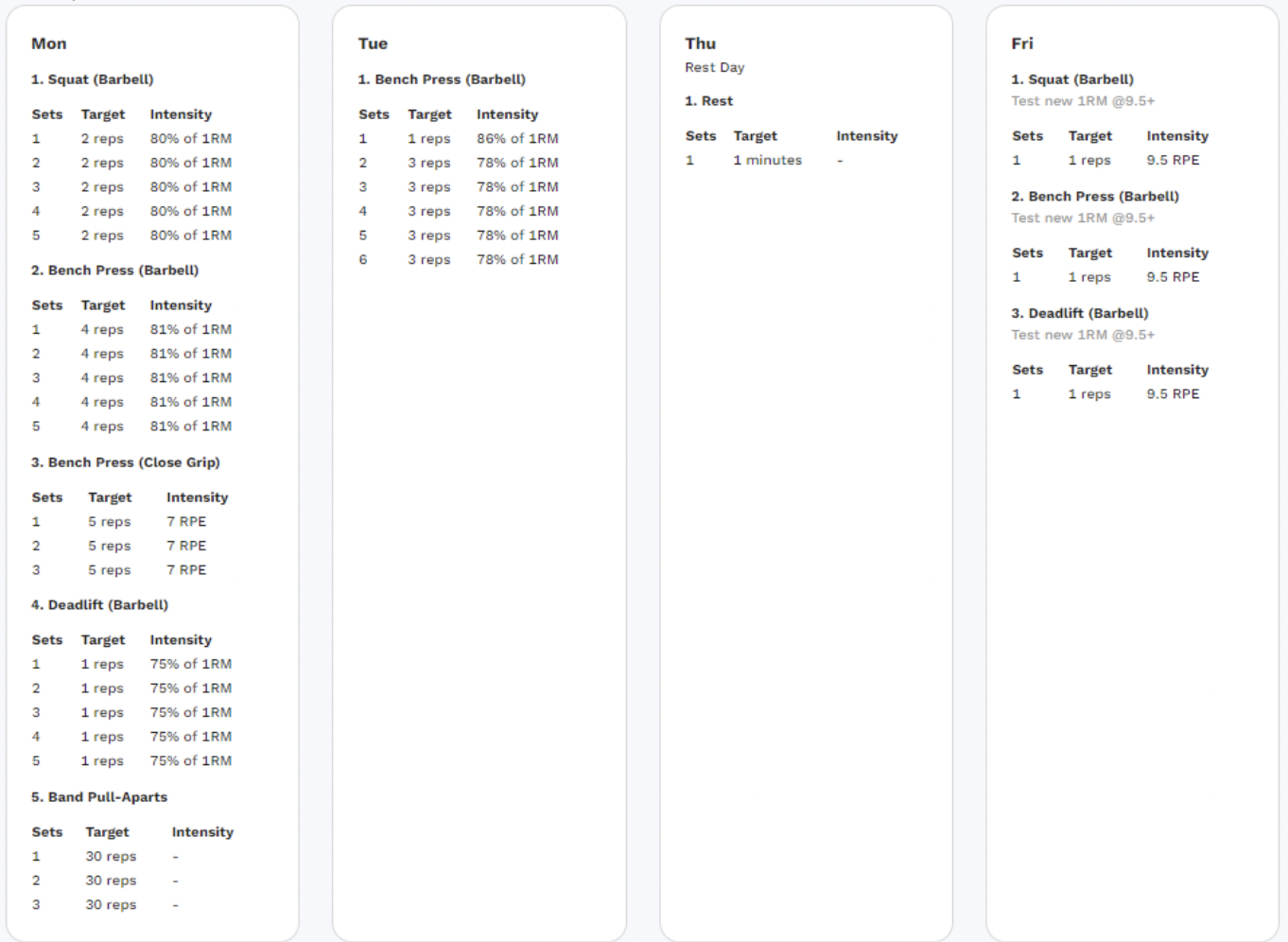
How Long is a Peaking Phase in Powerlifting?
Peaking phases usually can last several weeks or even a few months long, making them suitable for beginners and intermediates. The program above for example is nine weeks in length. Although there is quite a bit of variance, peaking phases are relatively short term in length and not year long processes. Unfortunately, you can’t be in top physical condition year round, it just doesn’t work that way otherwise you’d set a new record everyday. The best deciding factor on how long your peaking phase should be is when your next meet is as you want the final week of the peaking phase to line up with the week of your competition, allowing as much time to pass before the meet as possible to ensure optimal recovery. So if your competition is in 6 weeks, consider using competition prep with a peaking phase that is 6 weeks long.
If you have the luxury of time then it really depends on your personal preference for how many weeks you decide on for your peak. This is because there is no specific timeframe as to how long a peaking phase should be, or what an optimal peaking phase is. Research has shown benefit from 6-10 week peaking phases or even as little as 1-2 weeks or as long as 12 weeks (2). The timelines do not always have to be rigid. If you just want to realize some top end strength you can run a peaking phase until you see the need for a change or are no longer making any progress.
If you’re unsure of what to do, don’t worry as many programs will have the peaking sorted out for you. Take a look at the length of the program on Boostcamp to find an appropriate peaking phase that suits your particular circumstances. Looking at your prior training history to see what kind of peaking phases have worked for you can help you decide on a timeframe. You’ll read more about this later in this article.
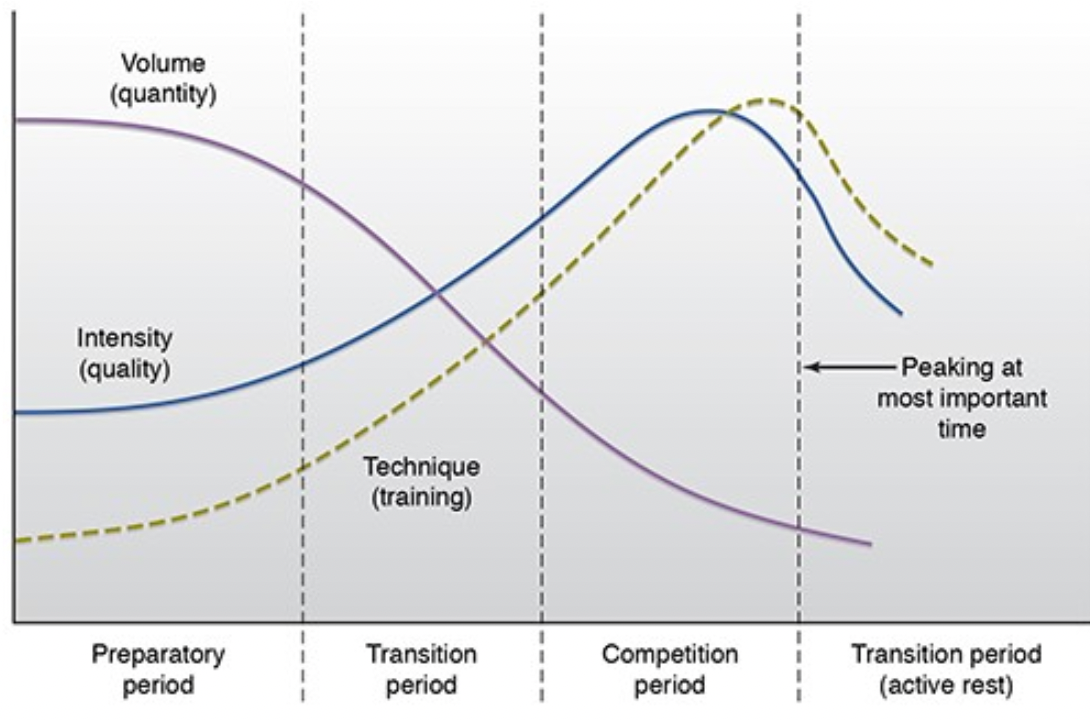
How do you Peak for a Powerlifting Competition?
When it comes to powerlifting, you traditionally want to lower your volume and increase intensity. You also want to consider maximizing specificity, which in this case would be performing one rep maxes and lifting heavier weights. Lastly, you need to minimize fatigue so that you can recover from your training and be ready to compete. To do this successfully you will want to control these four things as much as you can when trying to peak for powerlifting. In other words, it is important to focus on lifting heavy weights for single reps rather than doing a lot of reps with lighter weights, as this can generate a lot of fatigue and be less specific to your intended results.
Volume
In the case of volume, this refers to mainly your sets and reps. You can manipulate these variables leading into a one rep max attempt to facilitate your peaking and volume reduction manipulations. Typically, you will reduce the sets and reps of your workout session as you get close to competition or test day, but keep in mind you do not want to be going all out on a lift like your bench press right before a competition. This can be a big or small deduction that is done drastically or slowly. Again, there is lots of variance here, but volume will usually decrease somewhat leading into a meet manipulations. There are of course exceptions and some athletes excel greatly with volume leading into the meet, so know that this is not set in stone. Rather, volume is one variable of many that you can manipulate and use to help you peak.
Here’s an example of how volume is affected in a peaking program, take note how the total reps go down despite different combinations of sets and reps. This should equate to overall lower volume even if you increase in load as the weeks go by.
Week 1
Squat - 5 x 5 @ RPE 8 or 80% of 1 Rep Max (25 reps total)
Week 2
Squat - 4 x 5 @ RPE 8 or 82.5% of 1 Rep Max (20 reps total)
Week 3
Squat - 5 x 3 @ RPE 8 or 85% of 1 Rep Max (15 reps total)
Intensity
Intensity is probably the most important variable when it comes to peaking. This refers to the absolute weight on the bar and is crucial for successful strength training. Your goal is to lift the most amount of weight possible, so naturally intensity will have to increase as the weeks go by to help you achieve this high frequency. Unfortunately, it’s not as simple as just building to over 100% of your one rep max. With more intensity, you also run the risk of more fatigue so it is a fine balance in terms of how much you should increase intensity. Some athletes might do great working at 90-95% or RPE (rate of perceived exertion) 9. Other athletes much prefer staying at 80-85% or RPE 8.
Here’s an example of how intensity changes in a peaking program.
Squat - 5 x 3 @ RPE 7 or 80% of 1 Rep Max
Squat - 5 x 3 @ RPE 8 or 85% of 1 Rep Max
Squat - 5 x 3 @ RPE 9 or 90% of 1 Rep Max
Fatigue
This next factor is a lot more difficult to consider and control as you do not have an objective way of measuring fatigue unlike volume and intensity. You could also be fatigued from many different factors, some which may not even be related to your training intensity such as your work stress, lack of sleep, or even your diet. However despite this difficulty, controlling fatigue is absolutely pivotal when it comes to having a successful peak. Too much fatigue and you won’t have enough gas to potentially set a new personal record. Rest too much and you might not be in the proper physical condition to pull some big weight.
As a general rule, you shouldn’t feel absolutely beat up heading into a meet. Take a look at your fatigue both inside and outside the gym. If you’re finding yourself constantly tired, weights are sluggish and slow, things feel heavy, and overall you’re just not having a good time… It’s probably a sign you might need to pull back a little more (or pound down an energy drink). Don’t be afraid to take a taper with a day off or two before maxing out your lifts, especially during your last week of training. On the other hand, don’t feel the need to take weeks off before a competition just because you’re feeling a bit fatigued. You want to feel recovered but not at the expense of your physical preparedness. Balanced, as all things should be. It’s not an exact science but either way you won’t lose all your gains so try to control your fatigue the best that you can.
Specificity
Now in powerlifting you get three attempts per lift to achieve a new one rep max. This means that you are only doing one rep, also known as an opener. According to the SAID (Specific Adaptations to Imposed Demand) principle, your body will get better at what you train it to get better at (3). So with the principle of specificity, you will want to be doing one rep in your training to help prepare for this and maximize your technique leading into the meet. Now you don’t have to have singles in your training to prepare for this, but it can definitely help with your peaking, including triples, doubles, and singles in your training.
Here’s an example of how singles can be incorporated into your training.
Squat - 1 x 1 @ RPE 8 or 90% of 1 Rep Max
Squat - 3 x 5 @ RPE 7 or 75% of 1 Rep Max
Squat - 3 x 4 @ RPE 7 or 77.5% of 1 Rep Max
Squat - 3 x 3 @ RPE 7 or 80% of 1 Rep Max
Trial and Error
Despite all the guidelines, programs and research on peaking and tapering, there is no gold standard. You will have to do some trial and error to figure out what works best for you. Remember, the key is to maximize performance on the platform, it doesn’t matter how strong you are in the gym before competition day.
For starters, just focus on the heavy hitters. Follow the program, train hard, and ensure you get adequate nutrition and sleep. You’ll learn more about yourself naturally as your training age and experience increases.
For those who always seem to fall short on game day, reflect on your previous meet experience and see what potential changes can be made. Do you feel sluggish and weak on meet day? Consider maintaining more volume leading into the meet or allow for more recovery before the meet. Are you always super strong the week before the meet? Try changing your peaking timelines by reducing your program a week or adjusting your training cycle. There are so many ways to adapt your training to suit your needs better, so start with manipulating a few variables and go from there.
Adopting a reactive growth mindset when it comes to training can help you fine tune your peaking strategies. This way you can reflect and make changes to your programming as new data emerges. If someone thrives off sets of ten leading into a competition, then so be it. Tradition is not always the best path forward so don’t be afraid to experiment if things are not working out for you.
The good news is that there are many ways to achieve a successful peak, and your body can operate within a range of peaking strategies and programs. If you miss a day or two due to life, or even some reps in training it’s probably fine so don’t stress about it. You didn’t ruin your peak because of that.
If you are interested in learning more ways to customize your powerlifting programming to maximize your performance, checkout this article here: https://www.boostcamp.app/blogs/how-to-customize-your-powerlifting-program
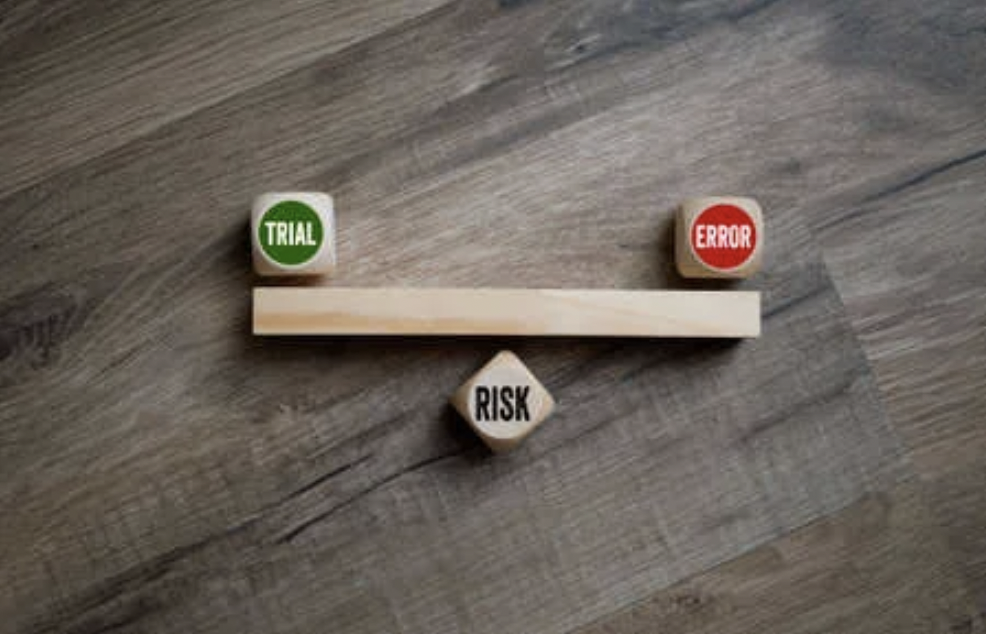
Tips on Peaking for Powerlifting
Now you have an idea of what peaking is and how you can do it. Here are some tips for you to enhance the chances of success for your peaking phase.
Taper your expectations
Peaking can help, but it’s not a magical sendoff to a land of infinite gains. Don’t rely on a huge performance boost and be open to adjusting the load on the bar based on how you feel on the day.
Be flexible
Things happen, sometimes out of your control. You may have to move your peak early or later, you may have to slot in a deload week or skip some sessions. It’s ok, you won't get fat and lose all of your muscle mass by skipping a day, you’re still on track to have a big day when the time comes.
Less can be more
Sometimes you get so amped up leading into competition that you just want to do more and more and more. But doing more has diminishing returns and can be detrimental. Like medication, you want the right dosage. If your program is working out for you then don’t do more for the sake of doing it. If it’s not working out for you, doing less is also an option to consider.
Stay focused
The goal is the competition. Don’t run off and overshoot because you’re feeling hot one day or your friend is at the gym maxing out and you have FOMO (Fear Of Missing Out). Don’t take a whole week off just because you feel extra tired one day. Trust the process and adapt accordingly. Remember the endgame is on the platform.
Don’t throw the kitchen sink at yourself
It’s nice to try new things and see what peaking strategies would work best for you but do not try to do everything at once. You don’t need twenty singles with volume and a bunch of overload accessories like block pulls or reverse bands just because you’re gearing up to peak. Keep it simple stupid, look at what you’ve been doing and adjust some variables to promote extra recovery and specificity while trying to maintain your overall fitness.
Challenge your biases
This is the most important tip. Knowledge changes and you will learn more about yourself as you train and obtain more experience. You will have to use your critical thinking skills to properly reflect and make the best training decisions. Doing this correctly will quite often have you challenging your biases. Don’t be afraid to go against the grain even if it doesn’t feel quite comfortable in your headspace. At worst, you’ll learn more about yourself. Just because something didn’t work before doesn’t mean it can’t now and vice versa. As Thomas Edison once said “I have not failed. I've just found 10,000 ways that won't work.”

Other Considerations for Peaking
Now if you’re planning a meet prep for powerlifting, chances are you have other things you need to consider. Are you cutting weight for the competition? Are you traveling? These are very important factors that must be considered when peaking.
Cutting weight
If you are cutting weight for a competition, a new variable is added that can drastically influence your strength levels. As a result your peak may be affected. This article won’t go over cutting weight in depth, but you should have a clear roadmap of how your cut will take place in conjunction with your peaking program. Whether you’re dieting, doing a water cut, or both, your best bet is to plan and prepare early. You don’t want to be the person that misses weight and is unable to lift on game day.
Extended travel
Travel is another big one. If you are spending a large amount of time traveling, you will want to budget this into your peak. You may have to squeeze in some sessions before your travel and may even have to workout when you arrive at your destination. Take a look at the area around the competition and see if there might be gyms in the area you can train at that suit your needs. Quite often the meet venue might have a training room for you to get that last session in to ensure an optimal peak. Aside from gyms, it would also be a good idea for you to familiarize yourself with where things are (grocery store, sauna, etc.) so you can be prepared with everything you need at your competition.
Regardless of what else might be going on during your peak, your best move is to adequately plan and prepare for it.
Finding a Good Workout Program
Boostcamp has plenty of free programs that help with peaking for powerlifting, both strength and hypertrophy, and any other goals that you may have. A workout program helps to guide you, and can diversify your routines so you can peak like never before. That being said, check out the Boostcamp App for some great programs. You can find the perfect workout program as there are over 50 free programs to choose from, or you can create the perfect workout program.
Conclusion - Load the right amount to lift the most amount
Powerlifters all over the world have a common goal and that is to achieve a new personal best in the disciplines of squat, bench and deadlift. To achieve this, a proper peaking phase can ensure you will be at your best condition to lift some big weight.
Many peaking strategies can be viable, and it’s up to you to see which one fits you best. With peaking, you’ll be sure to save those kilos in training for when it truly counts on the competition platform.
Also, be sure to follow Boostcamp on Instagram and subscribe on YouTube!
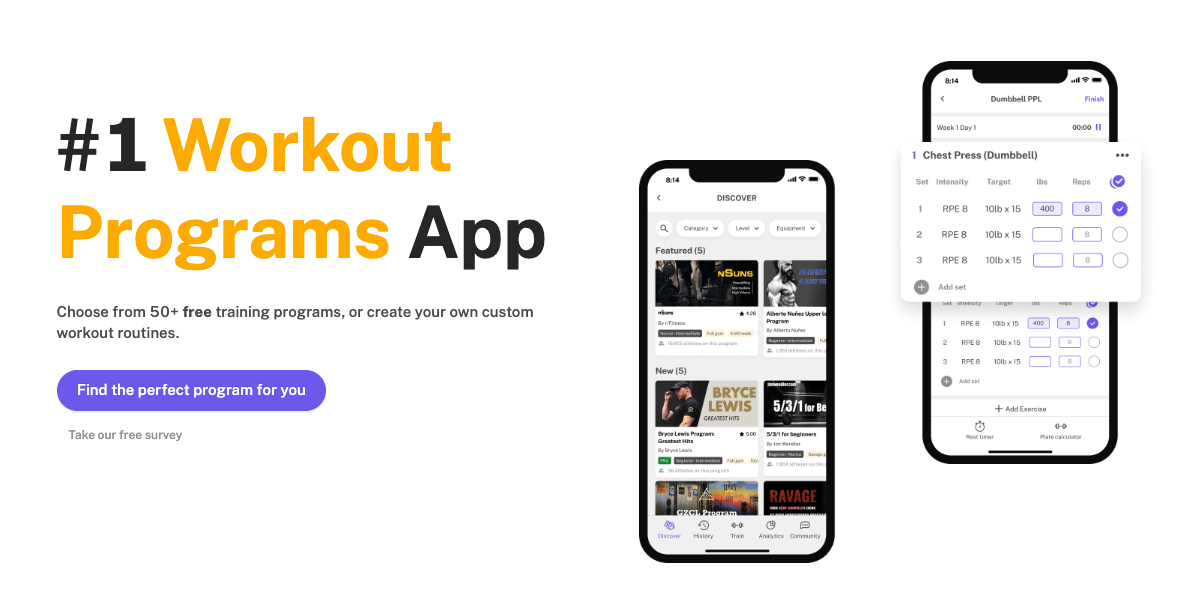
References
Travis SK, Mujika I, Gentles JA, Stone MH, Bazyler CD. Tapering and Peaking Maximal Strength for Powerlifting Performance: A Review. Sports (Basel). 2020 Sep 9;8(9):125. doi: 10.3390/sports8090125. PMID: 32917000; PMCID: PMC7552788.
Kiely J. Periodization Theory: Confronting an Inconvenient Truth. Sports Med. 2018 Apr;48(4):753-764. doi: 10.1007/s40279-017-0823-y. PMID: 29189930; PMCID: PMC5856877.
Fisher JP, Csapo R. Periodization and Programming in Sports. Sports (Basel). 2021 Jan 20;9(2):13.

